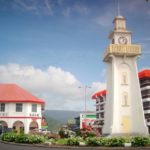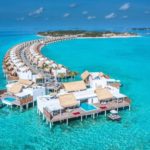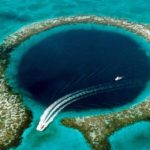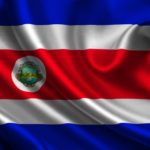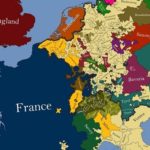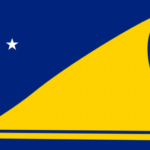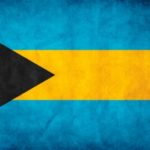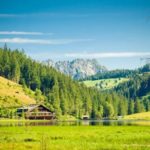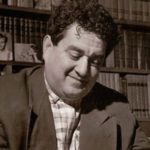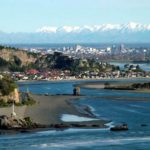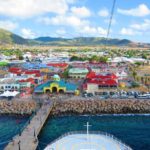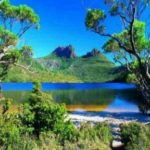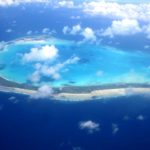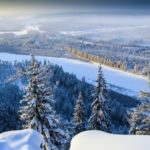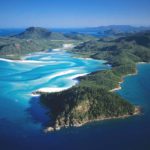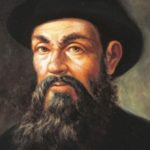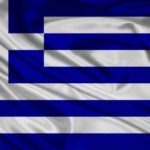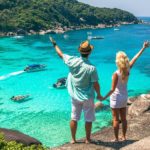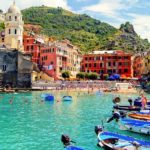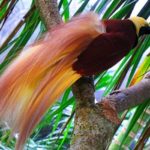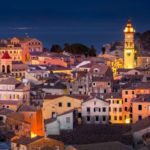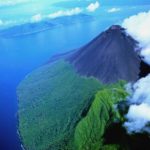Samoa
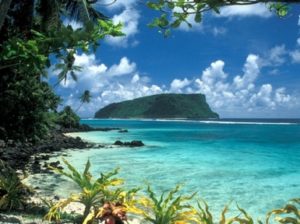 Western Samoa is an almost untouched and very amazing corner of our planet. It was here that the famous drama film “Return to Paradise” was filmed; it was in this heavenly place that the great writer R. L. Stevenson decided to retire from civilization and spend the last years.
Western Samoa is an almost untouched and very amazing corner of our planet. It was here that the famous drama film “Return to Paradise” was filmed; it was in this heavenly place that the great writer R. L. Stevenson decided to retire from civilization and spend the last years.
Thanks to its coastline, volcanic landscapes and tropical forests, Western Samoa has become a wonderful place for outdoor activities and hiking trips.
You can use a boat or canoe to explore the island, sometimes it is the only way to get to some uninhabited islands and atolls.
Another, no less affordable way to travel is a bicycle. You can have a good time cycling around Savaii Island. Fishing is a good form of recreation, but this pleasure is not cheap because the exclusive rights to fish in local waters belong to the inhabitants of the coastal villages.
The official name of this state since 1997 is the Independent State of Samoa, before that it was called simply Western Samoa. The fact is that the group of Samoan islands is divided in two, an independent state is located on the western islands, and the American trust territory, the so-called American Samoa, is located on the eastern islands. This division was associated with the civil war, which split the Samoan society into two parts at the end of the XIX century. The western part, the islands of Upolu and Savaii, was seized by Germany, and the eastern part, by Tutuila and Manua, by the USA. During the First World War, which unfolded in Europe, the German part of the archipelago, without any resistance from the Germans, seized New Zealand, subsequently forced to provide the Samoans with limited self-government, and then independence. By the way, Samoa is the first state in the Pacific – apart from New Zealand, which gained independence. Eastern Samoa to this day remains American, and it is unlikely to ever reunite with its western part. There are several good reasons for this, the main of which is the reluctance of the Eastern Samoans themselves to leave the United States. Although American Samoa is not included in the United States, Eastern Samoans have an excellent opportunity to leave for the United States and receive full American citizenship there. If they join the independent Samoa, they will lose this privilege.
Geographically, Samoa is located in the heart of Polynesia, almost at the crossroads of their American trade routes to Australia and New Zealand. The islands have a very mountainous terrain and have a pronounced volcanic origin. There is an active volcano on the island of Savaii, although the last time it erupted a hundred years ago, however, it did not fall asleep, and at any moment you can wait for the next eruption. However, this volcano is small, and its eruptions did not bring any noticeable damage to the local economy. The climate is Samo-tropic, cyclones often fall on the islands, in which the wind speed often reaches 150-200 km / h. Despite the fact that Samoa is very far away from all the continents – Asia, Australia and America – there are a very large number of very different plants growing on the islands, more than a third of which are endemic, that is, there are no more of them in any other place. In contrast to the flora, the fauna on Samoa is very poor – there are only 8 species of endemic birds on the islands, and 35 species introduced by Europeans, or that have come to Samoa from Australia and Asia in other ways. And although there are a lot of insects, mostly butterflies, but there is only one species of snakes and 7 species of lizards – that’s all Samoa can boast in this regard. But the marine fauna around the islands is very rich. Turtles, crabs, clams and fish are found in Samoa in abundance.
On Upolu, which is the main island of the archipelago, you can visit the wonderful museum of the English writer Robert Louis Stevenson, the center of traditional art of Polynesia, the Samoan village-museum and, of course, Paradise Beach. Those who wish can enjoy the beauty of the ocean, scuba diving, participate in fishing or dive into the nature of the inner part of the island. The only city of Western Samoa, which is also the capital, is Apia. Despite the banks, offices and snack bars, which would have to betray him modern features, the city has retained its national charm. Landmarks for exploring the city can serve as a clock tower and a memorial erected in honor of those killed in the Second World War. West of the tower is Flie Market – a market in which you can find very diverse and even interesting products. Here both electronics, and clothes, and sipao are local fabrics, which are traditionally painted with leaf juice and bark, and, of course, coconuts and precious shells. Many churches are scattered around Apia, the largest of which is the Catholic Church, which is located on the city shore. The smaller Anglican Church is decorated with beautiful stained glass windows, and the relics of the missionary, Rev. John Williams, who was one of the first to come to these islands, rest in the Christian Congregationalist Church. Apia has three hotels, an observatory, small businesses and government offices. Coastal villages stretch from the center to the west.
On the outskirts of the capital is located Stevenson’s manor. Here is the tombstone of the English writer. When Stephenson died, the islanders worked around the clock to cut a path to the top of the hill. They wanted to bury their beloved “tusitala” – which means “the narrator”, the next day with all the honors.
On the southern coast of Upolu, on the coast surrounded by palm trees, it is nice to relax and unwind, enjoying the tranquility of these places. The best beaches are considered “Return to Paradise”, named after the eponymous film, the Matareva beach complex and a number of other wonderful and well-equipped places for a full-fledged beach holiday. They abound in quiet bays and small ponds, which supposedly were created specifically for snorkeling. To the east of Apia there are wonderful beaches with ideal places for swimming. Continuing along the coast, you can get to the eastern edge of the island and see the unforgettable reefs of the Aleipata region.
One of the places worthy of attention is Lake Lanoto’o, it is also called Goldfish Lake, today it is not very well known, but during the German occupation the lake was a popular holiday destination, where officers with their ladies liked to relax. Today flocks of goldfish swim in the strange green water of the lake and swim to the shores in search of food. No one has yet managed to reach the bottom of Lanoto’o, although many attempts have been made. It is so deep that without special diving equipment it is dangerous to sink to its bottom.
Savaii, one of the largest Polynesian islands, and at the same time the most sparsely populated, partly due to the fact that the unpredictable Matavan volcano sleeps on it, and a considerable part of the island is covered with frozen magma on which nothing grows. The island has largely retained its original charm, and is almost not affected by Western civilization, and the residents’ lifestyle has undergone fewer changes than even Upolu. And of course, there are lots of amazing places for recreation and scuba diving. The Tafua Rainforest, a wonderful rainforest reserve, is located on a stretch of coast with caves, grottoes and lava fields. Lava fields were formed during the eruption of Matavan in the years 1902-1911, and today represent an impressive landscape. Those who wish can take an unforgettable walk around the crater.
Between Savaii and Upolu, right in the strait, is Manono Island. This is a very quiet place where residents of the noisy capital like to spend their holidays. The government is making a lot of efforts to preserve the fragile ecosystem here. West of Manono, the island of Apolima was lost. It consists of petrified lava flows. And the only village, whose population is only about 150 people, can be reached only one tiny passage from the sea. To travel to Apolim, you will need an invitation from one of the residents, and a chartered yacht or boat. Those who overcame all the difficulties, visited this island, claim that they have never experienced greater isolation from the world.
In September, Samuel’s biggest holiday is the Tehuila Festival, which affects almost all the islands. In its program choral singing, “dancing fire”, the traditional dance “Siwa”, and of course the race on the boat “Fawtasi”.
